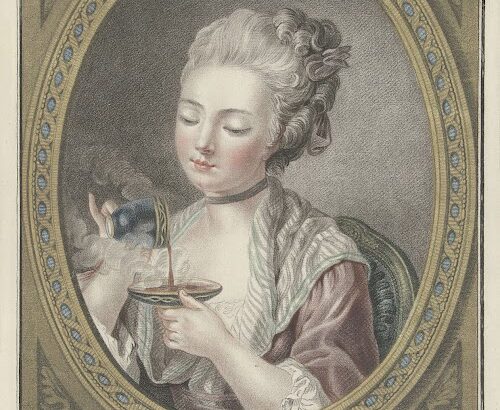The Dutch are coffee lovers, especially students. Everyone has seen it before: trendy coffee shops packed with people working or studying behind their laptops. These cafes have become places where knowledge is acquired and research takes place outside the walls of universities. Four centuries ago, during the 17th century, similar trendy spots started to emerge, but were then called “koffiehuizen” (coffee houses). For the first few decades, coffee was only affordable for the elite. It was served exclusively in coffee houses where scholars and elites gathered to discuss politics, current events, and science. Over the following four centuries, coffee became affordable for everyone and gained popularity. Because of that, the elitist status of coffee houses faded, but they remained places where people came together to share and acquire knowledge. So, how did coffee change in the 18th century from an elite beverage to one enjoyed by everyone, and ultimately the most consumed drink in the Netherlands?
‘Cauwe’ arrives in the Netherlands
The first shipment of coffee arrived in Amsterdam in 1661 and was written as ‘cauwe’ instead of the modern term ‘koffie’. This coffee was shipped to Europe by the VOC (Dutch East India Company) from the Islamic world, where it had been enjoyed by all social classes since the 15th century. European travelers discovered the drink in the 16th century and described it as ‘black as ink’. Despite these descriptions, it wasn’t until the 17th century that Europeans started to buy and drink coffee. Europe was still hung up on tea, which was cheaper than coffee and easier to trade in for the VOC. Besides, the Christian church called coffee the ‘devil’s drink’ because of its Islamic origins, but in 1600 Pope Clement VIII blessed coffee as a Christian drink and from this moment on coffee started to gain popularity in Europe.
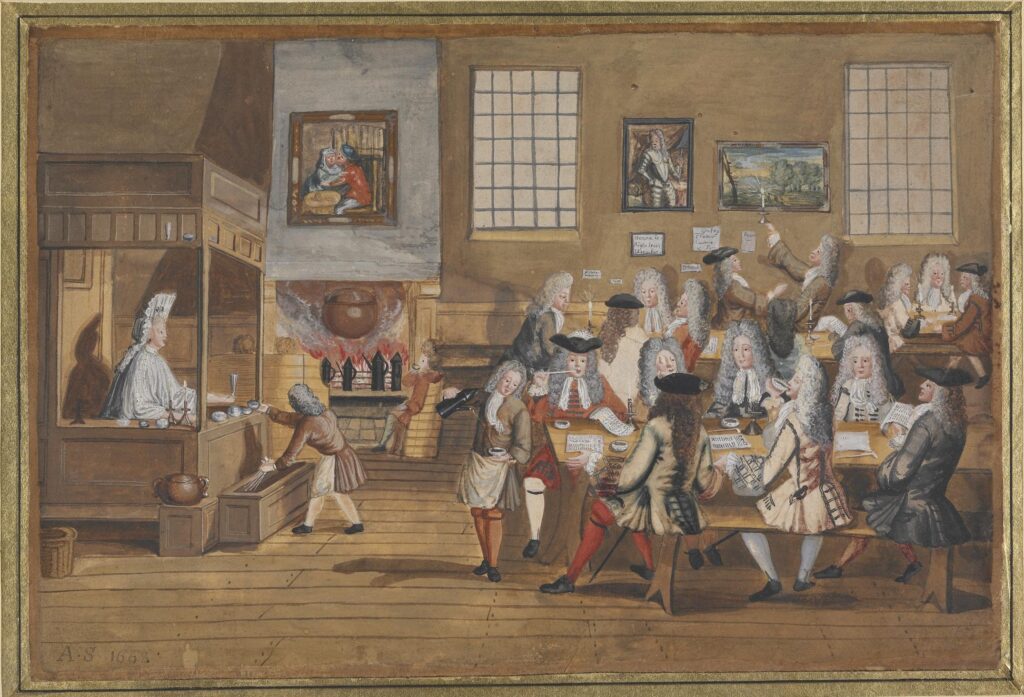
As mentioned before, the first coffee shipment arrived in 1661 in Amsterdam and the first coffee-auction was held in 1662. Coffee was initially quite expensive due to its risky overland transport, so it was served exclusively in coffee houses. Wealthy immigrants, travelers and merchants visited these coffeehouses. But just like today, students in the 17th century were also one of the key customers of these early coffee houses. Back then, they were trendsetters, more open to new, exotic products and locations. So, coffee first became popular among students, before gaining any notoriety among the elite. These early coffee houses had a rather simple interior like the one in the image above, but served as intellectual havens where people debated and discussed various topics, much like in the Islamic world.
Coffee for the elite and for everyone
In 1665, Amsterdam’s first coffee house opened, featuring a sitting area, couch, buffet, and serving table. In most of these coffee houses games and newspapers were available, making it a place for both intellectual discourse and relaxation. Coffeehouses were initially an exclusive elitist venue, but by 1686, Steven Blankaart described coffee houses as being packed with people, showing that coffee had quickly become popular among various social classes. This growing demand is also reflected in VOC shipping records. By 1690, coffee had become a regular part of their cargo, but it remained expensive. To reduce costs, the VOC decided to cultivate coffee in its colonies. In 1699, the first coffee was planted in Java, and Suriname followed in 1723. This led to a steady, cheaper supply of coffee, causing prices to drop significantly in the 18th century.
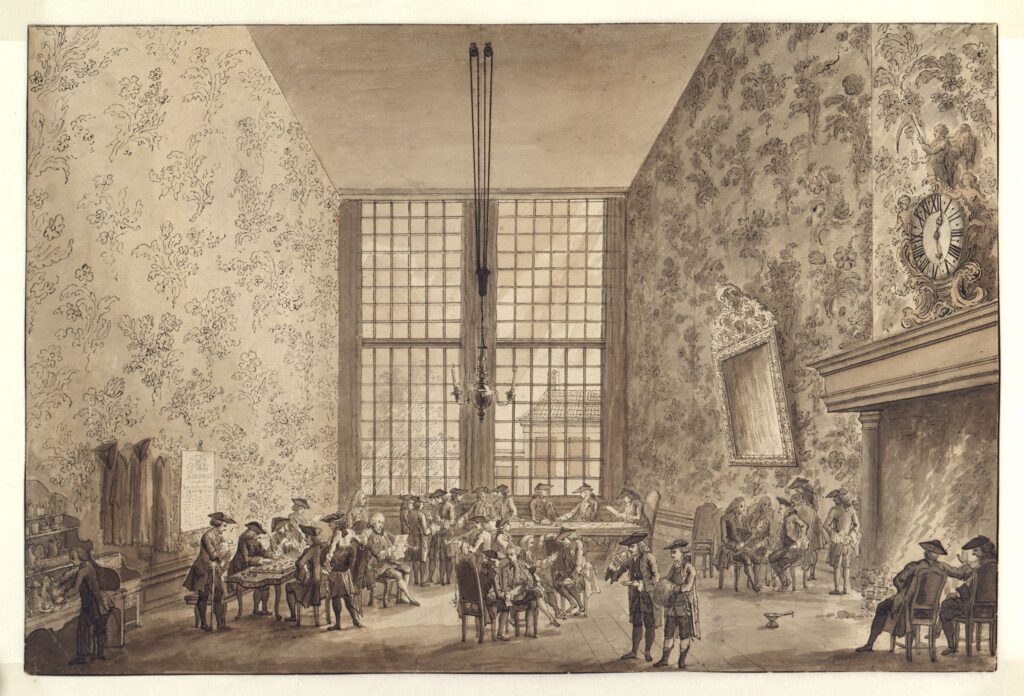
As coffee became more affordable, coffee houses gained popularity. The government decided to tax them, much like cafés and inns, for their beverage sales. Many coffee houses avoided this by operating illegally. The legal ones, catering to the upper classes, became more refined with large windows, leather chairs and artwork, like the one above. These establishments attracted the wealthy, who gathered to discuss trade, politics, and news. Meanwhile, illegal coffee houses catered to the common people, where entertainment was preferred over intellectual debate. Games, billiard tables, and gambling were more common in these coffee houses than libraries and international newspapers.
More coffee at home, less coffee houses
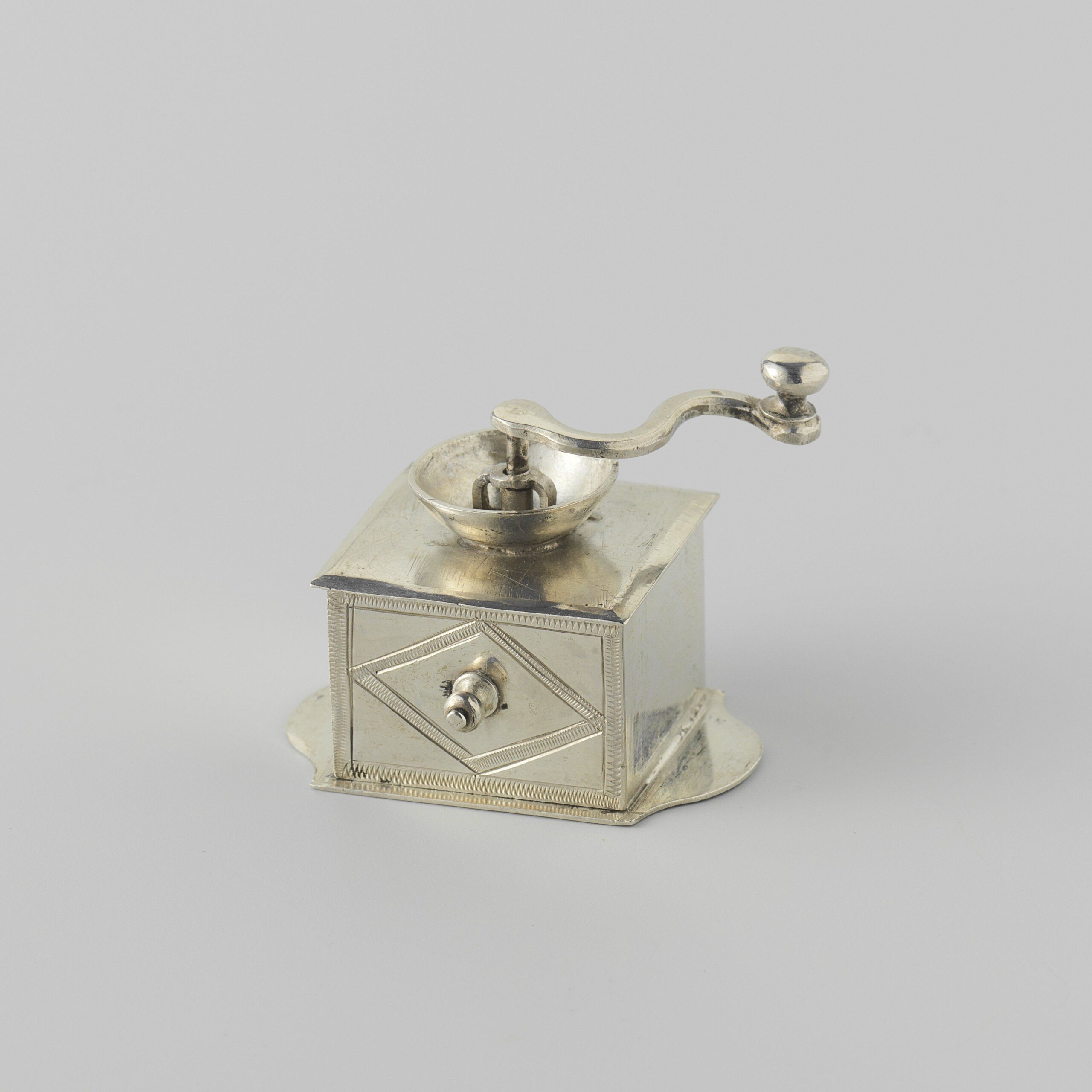
The heyday of coffee houses in the Netherlands was between 1720 and 1730. After this, their numbers declined as many illegal coffee houses began to serve stronger drinks like beer and spirits along with coffee. Additionally, people began drinking coffee at home. This shift required households to acquire new items, such as special coffee pots (to keep coffee grounds out of the cup), coffee grinders, and often new tableware. These changes are evident in household inventories from Amsterdam. As the number of coffee houses declined, the number of households with coffee-related items in their inventories increased. Coffee drinking became a common practice integrated into Dutch food and drink culture across various social classes as seen in the painting below. It became so normalized that even miniature versions of coffee tools, like the 1745 coffee grinder on the right, were made for dollhouses.
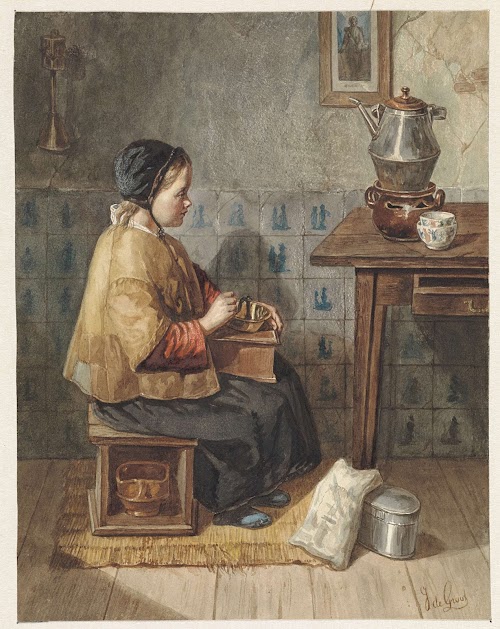
In less than 80 years, coffee transformed from an elite drink into an essential part of the general Dutch drinking culture. By 1750, it was consumed more frequently than beer, and as of 2024, this remains the case. Coffee is still the second most consumed beverage in the Netherlands after tap water, making it as popular as ever. It might seem that little has changed since 1750. However, coffee houses appear to be making a comeback. As mentioned earlier, many students study in trendy coffee shops, and people now queue for their morning coffee. Blankaert’s 1686 observation still souds familiar: “Now this drink has become so common that the coffee houses in Amsterdam are so full of people that they are packed.” Only today, people aren’t ordering a “cauwe” but rather a decaf cappuccino with oat milk.
For further reading:
- Reinders, P., T. Wijsenbeek-Olthuis, S. Braat en H. Nijboer, Koffie in Nederland: vier eeuwen cultuurgeschiedenis (Zutphen 1994).
- Muurling, S. T. D. ‘Een schatkamer in Europa: Koffie, thee en porselein in de Hollandse materiële cultuur.
Written by Judith te Kronnie
